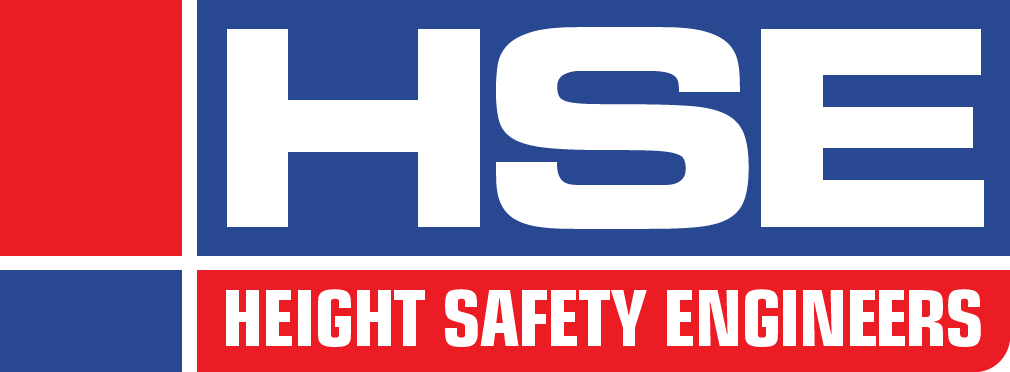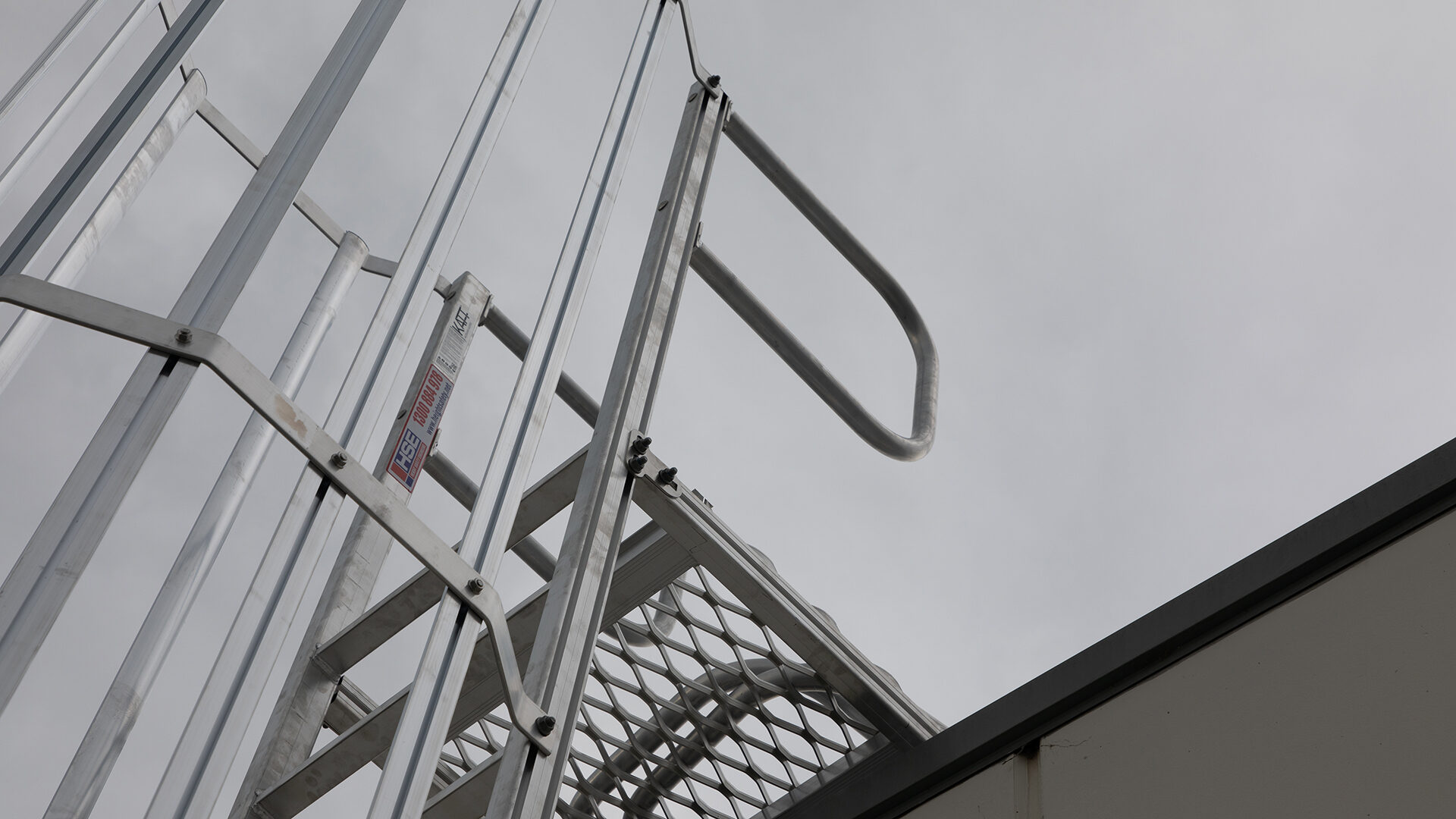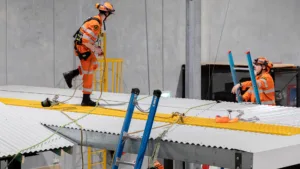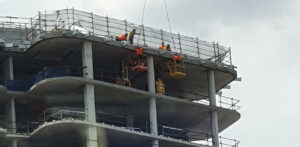There are about as many different types of ladders out there as there are reasons for needing to use one. Understanding the different types of ladders out there, and their use cases, can help make sure you are always using the best ladder for the job.
Just about everyone has been up a ladder at some point. The ubiquity of the humble ladder extends so far as to being one of those household items everyone seems to own, yet no one can recall ever going out to purchase. They just…are. It can seem as though the universe just wills them into existence, leaning against the back wall of your garage, waiting to be of service.
It might seem that a ladder is a ladder and that all the differences you see between them boil down to some bizarre marketing ploy to make one ladder stand out compared to all the others. But really, there are different types of ladders that are suited to different situations, different environments and different work needs.
In this blog post, we are going to look at a few of the more common types of ladders you may come across both at work and when working around the house.
Fixed ladders and portable ladders
Every ladder falls into one of two categories.
The first is fixed ladders. These are ladders that have been physically attached or connected to a building or other structure. They are designed to be permanent additions, not removed between jobs.
The other is portable ladders. These are the type most people will be familiar with. These are the ladders that you set up, use, then pack away at the conclusion of work. They are stored either in the garage or taken with you to the next job.
Step-type and rung-type
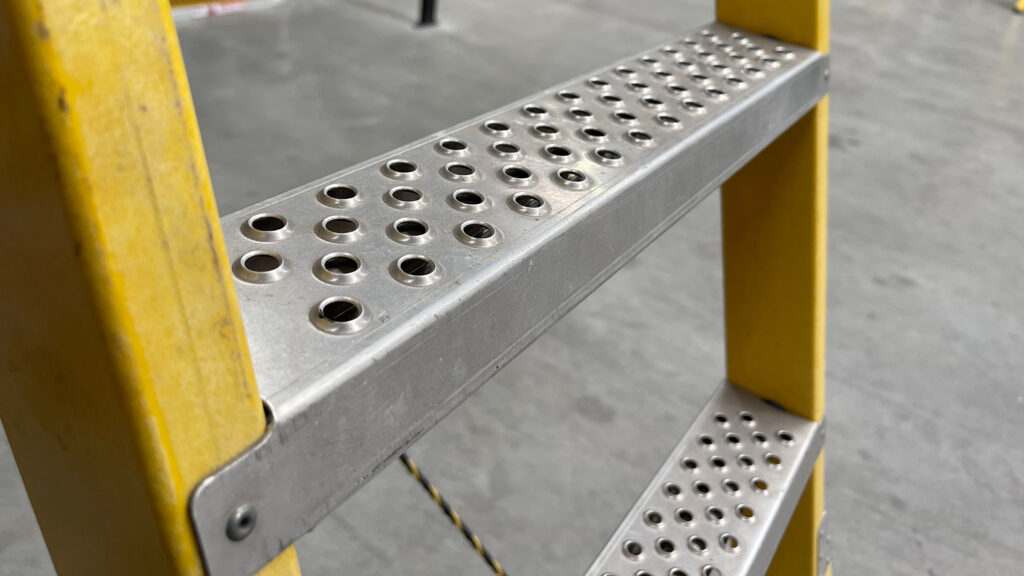
Both fixed and portable ladders can be either step-type or rung-type in their construction.
A step-type ladder – or step ladder – has a series of narrow, but flat, platforms spaced along its length for the user to stand on. They are commonly installed in situations where the angle of the ladder will be between 60 and 70 degrees.
A rung-type ladder replaces these platforms with cylindrical sections. These types are frequently used where the angle will be between 70 and 90 degrees.
A step-type ladder offers the advantage of a larger surface area that can be stood upon. Rungs are often employed in extension ladders, as their narrow cross section allows the two segments of the ladder to slide past each other in a smaller space.
Types of fixed ladders and their use
Fixed ladders are commonly found in commercial, manufacturing, and industrial settings. They can be in place to allow technicians to access roofs to perform maintenance on plant, or effect other work like gutter cleaning or façade repairs.
They can also commonly be found inside these buildings to facilitate access to raised walkways or to get in and around machinery.
Many internal fixed ladders (that is, the ladders inside a building) will be installed at an angle, with handrail added (if step-type only) as well, to make them work more like a steep set of stairs rather than a ladder. That said, they are still a ladder the risks of a fall still exist.
In some circumstances, fall protection may be provided with the use of a type 2 fall arrest device, sometimes called a self-retracting lifeline. These devices act to arrest the worker in the event of a fall, reducing the chances that a fall results in serious injury. In places where these are used, it is probably likely that the ladder and lifeline will need an accompanying rescue plan that can be actioned should a fall occur.
Where a fixed ladder is attached to an external part of the building, fall protection may be provided in the form of a vertical lifeline. Vertical lifelines are very similar to a horizontal static line – whereby a worker connects their harness to a shuttle that travels along the line.
However, in the event of a fall, the shuttle locks into position, preventing the casualty from falling all the way to the bottom of the ladder. The fall is typically limited to around 600mm.
Some external ladders may also be fitted with a ladder cage. While a ladder cage is not designed to prevent a fall, they can assist in making a fall less serious than it otherwise could be.
The purpose of a ladder cage is to prevent someone falling to either side of the ladder or away from it backwards. In areas where the ladder is adjacent to a taller edge (for example, going from the roof of a building up to the top of an elevator plant room), there is a risk that a fall could be from a greater distance than just from the ladder to its base.
Types of portable ladders and their use
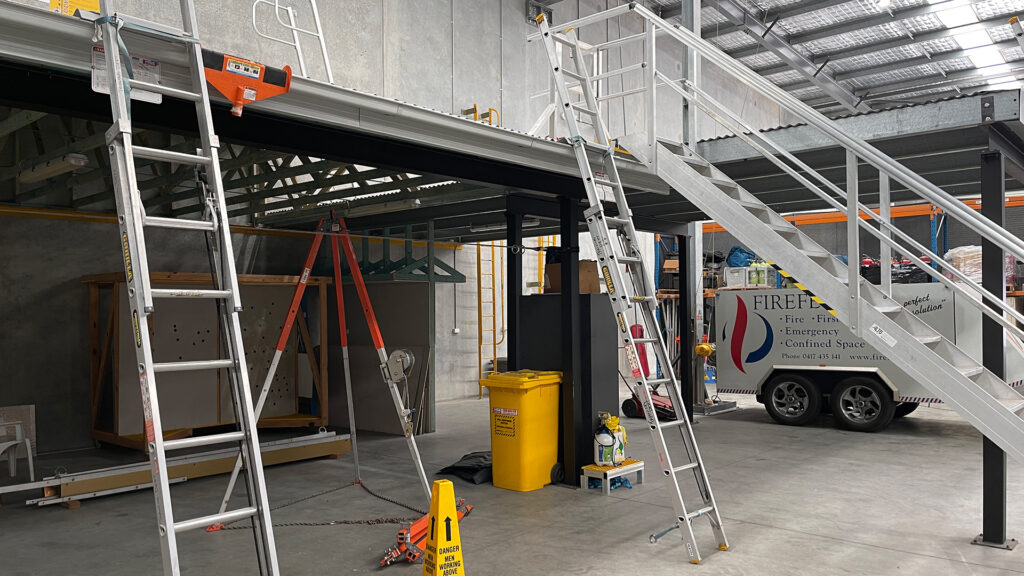
Most people will have come across a portable ladder in their lifetime. Just about everyone has an aluminium a-frame one in their garage. As mentioned at the top, they do just seem to physically manifest themselves into the existence. No one ever really goes out to buy one.
But portable ladders are also incredibly common in building and construction trades, communications work, maintenance, cleaning, and a plethora of other industries.
Just about every common, aluminium, a-frame type ladder will be a step-type. These are the types of ladders that tend to be colloquially referred to as a “step ladder”.
The other main type of portable ladder is called and “extension ladder”. These ladders generally consist of two similar looking ladders that slide together, enabling it to effectively double its length if required.
Extension ladders are commonly found in use on building sites and can be used with a ladder bracket to provide safe method of access to a roof or other area where no permanent access system exists.
Australian standards for ladders
There are two Australian standards that apply to the construction and installation (of fixed ladders).
For portable ladders, they should be designed and built to comply with AS1892 Portable ladders.
When it comes to fixed ladders, the relevant Australian standard is AS1657 Fixed platforms, walkways, stairways and ladders – design, construction and installation.
Fixed ladders may also be considered part of a safe access and fall protection system, which requires they be inspected at least annually, by a competent person as part of a regular compliance inspection schedule. AS1891.4 covers the selection, use and maintenance of industrial fall arrest systems.
Partners in protecting people
You can always find out more, and have your questions about height safety answered, by contact our team. Call us on 1300 884 978 or email enquiries@heightsafety.net to get in touch with the experts in height safety and your partners in protecting people.
